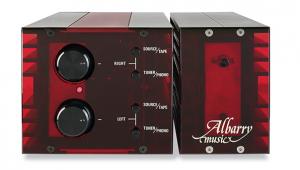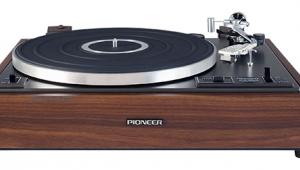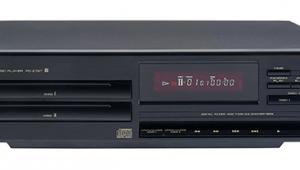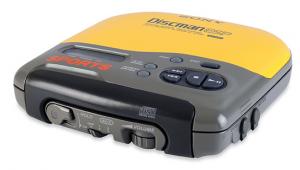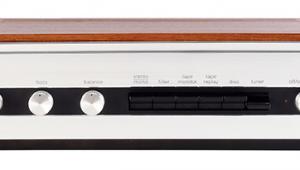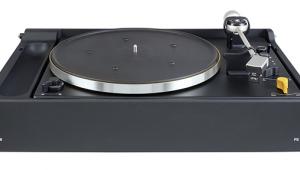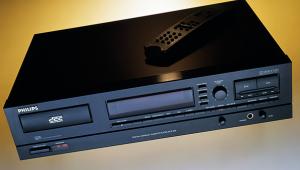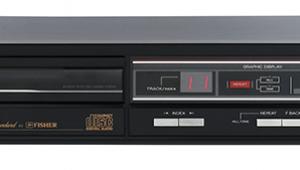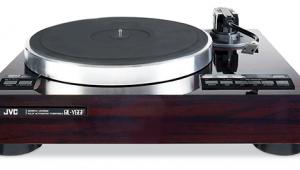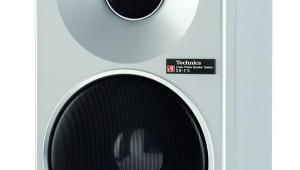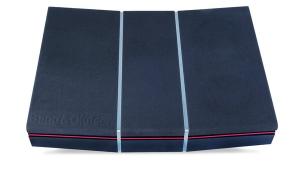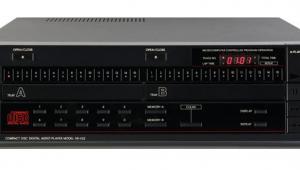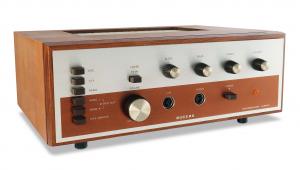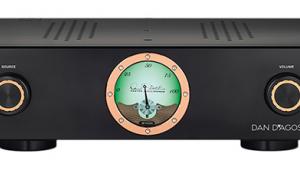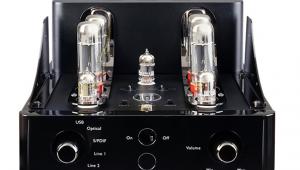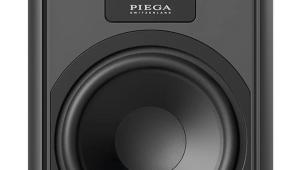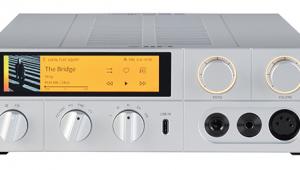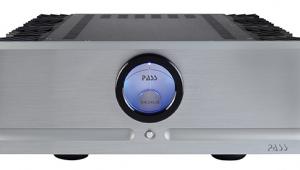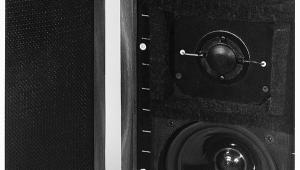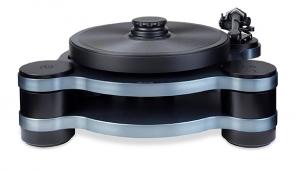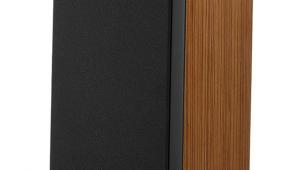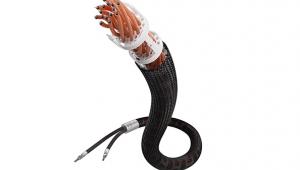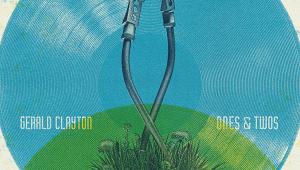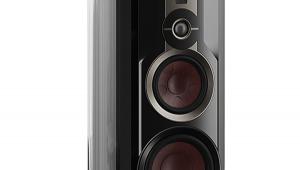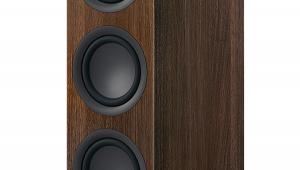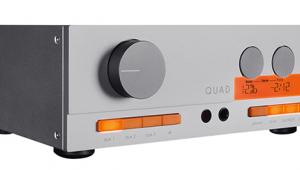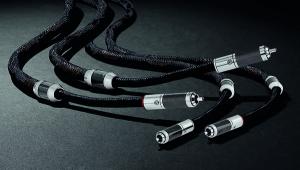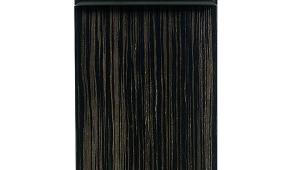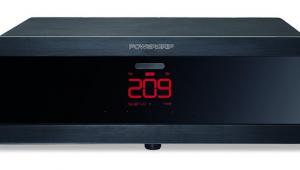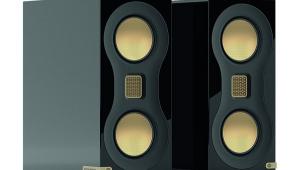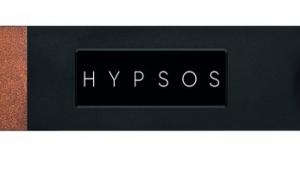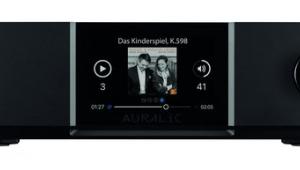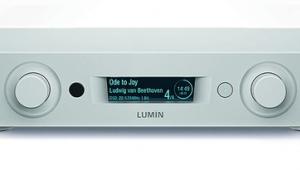Goodmans Magnum Loudspeaker
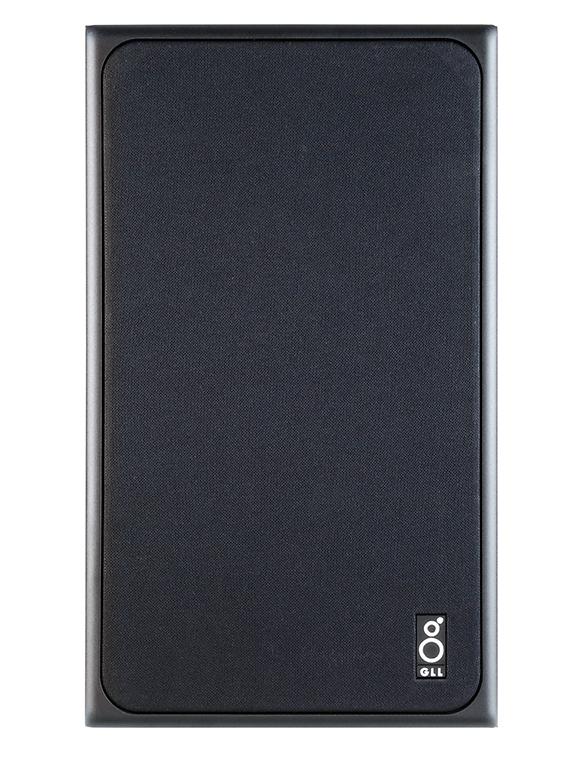
 One frustrating aspect of being a vintage audio enthusiast is encountering those companies who love to re-use model names and numbers. If you’re a B&O fan talking about a ‘Beogram 3000’, for example, are you referring to one of the two 1960s variants, the 1970s model or the 1980s version? It’s even becoming an issue all over again with updated recreations of famous designs, like the Mission 770 loudspeaker [HFN Jun ’22] and Quad’s 33/303 pre/power system [HFN Jan ’25] .
One frustrating aspect of being a vintage audio enthusiast is encountering those companies who love to re-use model names and numbers. If you’re a B&O fan talking about a ‘Beogram 3000’, for example, are you referring to one of the two 1960s variants, the 1970s model or the 1980s version? It’s even becoming an issue all over again with updated recreations of famous designs, like the Mission 770 loudspeaker [HFN Jun ’22] and Quad’s 33/303 pre/power system [HFN Jan ’25] .
However, the absolute king of this has to be Goodmans. The model featured here is the 1990s iteration of the Magnum, from Goodmans Loudspeakers Limited (GLL). Not the original Magnum from the 1970s, or the Magnum SL or the Magnum K. Oh, and let’s not forget the Magnum K2!
Sales pitchBasic marketing says that to drop a name that the public perceives as a success is risky, and revisiting a past glory is rarely a bad idea. Hence the Magnum could be seen as an attempt to recall Goodmans’ classic early speakers, albeit with a modern twist. However, the Magnums were actually the largest design in a three-strong range. The other model names were also very familiar, being Maxim and Mezzo.
The history of Goodmans is a long and convoluted one, and much of it seems to have faded into obscurity along the way. The company was founded in 1925 by Edward Newland, who went into partnership with a gentleman by the name of Mr. Goodman, from whom he rented his first premises and from which his company took its name. It started with the refurbishment and sale of ex-army earphones but, after acquiring a machine shop in 1931, production of loudspeaker units and earphones commenced from Wembley in 1936.
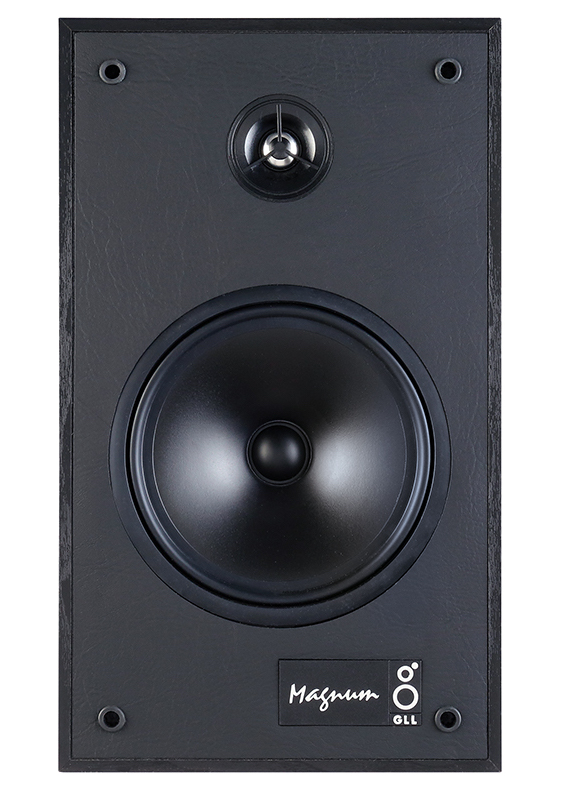
The death of Newland in 1955 led to subsequent partnerships with Robinsons and Radio Rentals, before the company was acquired by Thorn Electrical Industries in 1967. A move from Wembley to Downley Road in Havant followed in 1971, but within a decade Goodmans was struggling. Sales problems in the audio sector led to a £750,000 loss in 1981 and the shedding of over half of its workforce.
Hungary for moreConcerned, the directors of Goodmans approached what was now Thorn EMI and made a deal to buy out the company. This position was strengthened further by a subsequent split of the loudspeaker manufacturing business in 1991, rebranding as Goodmans Loudspeakers Limited and concentrating solely on OEM automotive driver and hi-fi loudspeaker manufacture. A new, dedicated factory in Havant was built in 1985, followed by a production site in Hungary. GLL also joined forces with Tannoy in 1987 to form TGI plc. Mordaunt-Short, Creek, Epos, Martin Audio and Swedish amplifier manufacturer Lab Gruppen were gradually added. For many years, TGI was Europe’s largest loudspeaker maker.
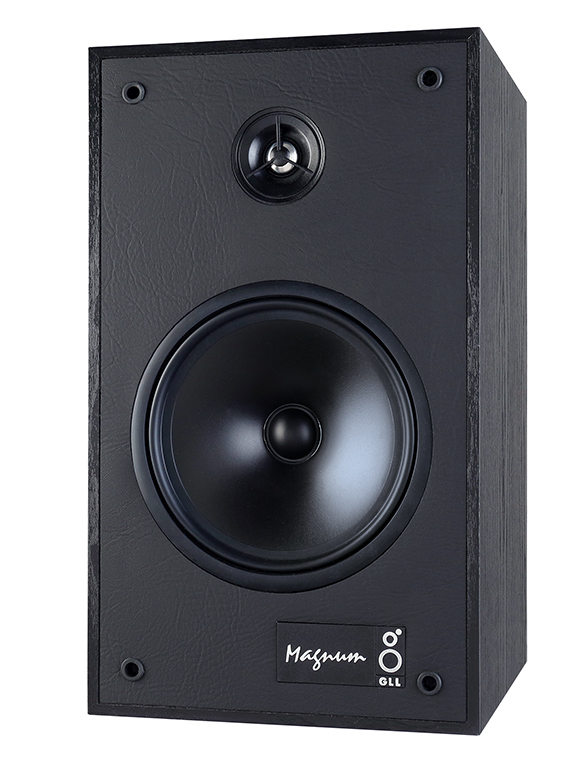
Although in-car drive units made up GLL’s core business at this time, hi-fi was not ignored and included development of the Imagio loudspeaker ranges, featuring the patented ‘Inductive Coupling Technology’ developed by Elei Boaz. The company also sought to re-capture the budget end of the market, as the second generation Maxim and Maxim 2s had done in the 1980s. The result was the Maxim 3.
Number’s upReleased in 1992, this built on the same basic recipe as the Maxim 2 but changed the paper-coned mid/bass driver for a polypropylene unit. The tried and tested, but rather agricultural, Audax tweeter also made way for an in-house designed 19mm metal alloy domed unit. The Maxim 3 was well received but soon given a makeover to bring it in line with the company’s full ‘GLL’ rebranding; the biggest tweak was a new grille, carefully designed in acoustic terms and held on by four pegs, in contrast to the earlier grille that was meant to fit around the baffle but rarely stayed in place. The model also lost its number, reverting to just ‘Maxim’.
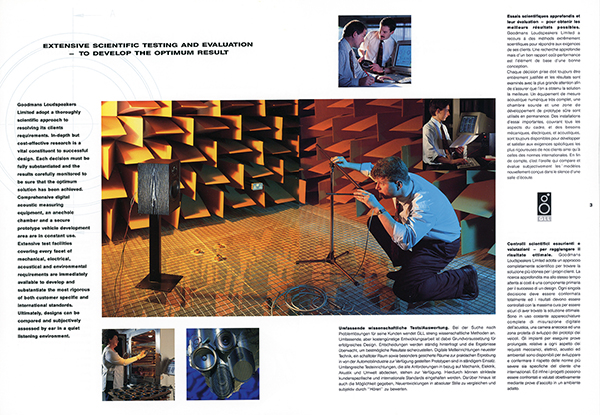
This is where the Magnum comes in, as one of two bigger, sibling speakers to GLL’s new-look Maxim. The Mezzo increased cabinet volume from 10 to 20 litres and upped the size of the mid/bass driver to 165mm. The Magnum went further, its 30-litre cabinet fronted by a 200mm driver. All three models were available in black ash or rosewood vinyl ‘veneer’.
Full-rangeGLL’s Magnum is a fascinating example of both brilliant and slightly lacklustre engineering. The aluminium tweeter was a definite plus, incorporating GLL’s ‘Delayed Resonance Damping’, which aimed to control ultrasonic resonances. It also had a protective cover that acted as a phase plate to improve dispersion, and gave a claimed response out to 30kHz before major breakup [see PM's Lab Report].
The bass/mid driver was equally advanced, with its polypropylene cone specifically constructed to control breakup, and attention paid to the cone/surround interface. Furthermore, the weight and inductance of the driver’s four-layer voice-coil was tailored to produce a smooth and progressive HF roll-off. As a result, the Magnum’s bass/mid driver is run full-range, with no electrical crossover.
Unfortunately, there was a bit of cost-cutting elsewhere. The cabinet was well made and decently finished, but was light in weight – 6.5kg isn’t much for a large-ish standmount. The vinyl wrap was also a clue to the speaker’s budget origins, and the jury is still out on the adhesive ‘leatherette’ decorating the baffle, which tidied it up but made internal access a fiddly job.
The Maxim, Mezzo and Magnum flew the flag for GLL’s budget models until 1998, when the company abandoned hi-fi loudspeaker production altogether. By this time, TGI was on the wane, with Epos acquired by Creek, and Mordaunt-Short sold to Audio Partnership. Denmark’s TC Group took over TGI in 2002, and Martin Audio returned to independence a year later. Despite investment in a further factory in Mexico, declining speaker sales, plus the departure of several key personnel, led to GLL’s closure in 2004, just a year before its 80th birthday.
![]() Adam listens
Adam listens
The GLL Magnums are a surprising loudspeaker in many ways. When you pick them up and position them on your stands – I used a set of Atacama SL-600s – it is difficult to escape the thought that the lightweight nature of their cabinets will be reflected in their performance, or that they will be flabby and boomy in character. The first experience of their sound is therefore quite a revelation.
Connected to my regular budget set-up of Yamaha A-S500 integrated amplifier and Cambridge Azur 650C CD player, the Magnums instantly announced themselves with an impressive sense of scale and precision. They also maintained this sound well off-axis, so you really don’t have to worry about whether you fire them straight ahead or toe them in, or be unduly concerned about how much angle to apply. They really are very room-friendly.
Set up around a foot from the rear wall, the Magnums gave a notably expansive sense of scale both laterally and in terms of front to back depth. Even better, the organisation of instruments within this area was impressive, allowing performers plenty of room to ‘breathe’ and be easily heard. But pushed any closer to the wall, the rear-facing bass reflex port made its presence felt with a hint of sluggishness to the Magnum’s low end performance. GLL originally recommended 10cm-20cm clearance from the rear boundary – I’d err towards the upper value.
Khan do attitudeThese speakers are musically engaging, with a clear impression of living, breathing musicians behind the instruments. Bat For Lashes’ track ‘Laura’, from The Haunted Man [EMI P915 5402], came across wonderfully, with Natasha Khan’s plaintive vocals a soulful delight. The piano backing her was beautifully rendered, both spatially and in the instrument’s tonal colour.
On a slightly larger scale, Madeleine Peyroux’s ‘Dance Me To The End Of Love’, from the Careless Love album [Rounder Records 0602498235836], filled the space between the speakers very neatly just as the vocal performance was, again, convincing and locked solidly centre stage. Similarly, the double bass was warm and weighty with a fine sense of woody realism.
Sparkle timeThe Magnum’s tweeter puts to bed any notion of older metal dome designs being all fizz and tizz. This speaker’s top end is deliciously open and insightful, but has an underlying sense of casual effortlessness. Crisp and rhythmically spry they may be, but the Magnums are far less challenging to listen to than some of their more forthright contemporaries. Consequently, ‘Come To Me’ by Koop [Koop Islands; Compost Records 234-2] was an absolute hoot. This is a foot-tapping piece of jazzy cheerfulness and the Magnums loved it. Yukimi Nagano’s vocals were breathy and vivid, and topped off with a delicious sprinkling of crisp percussion that sparkled, driving the track along.
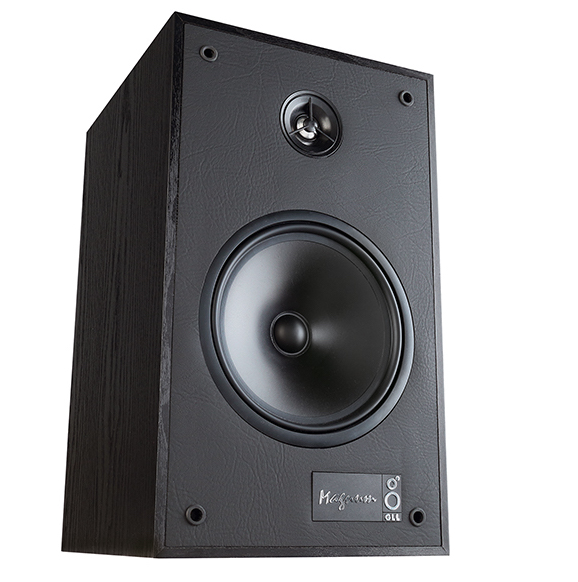
At the lower end of the audio band, the effects of the cabinet could be heard but, oddly, not necessarily in a bad way. The Magnum’s core bass performance, from that 200mm woofer, is well extended and elegantly detailed, giving basslines good form, pace and realism. However, this is all tucked behind a warm bloom that does colour things ever so slightly.
Worth the weightOn the upside, bass guitar notes on Steely Dan’s ‘Jack Of Speed’, from Two Against Nature [Giant 924719-2], were firm and weighty, as they should be, and with each easily distinguishable. However, it felt like a touch of reverb had been added, with each note lasting a fraction longer than it should. There’s a slight underlying plummy warmth to the sound that, while certainly not unpleasant, does occasionally detract from a low end performance that’s more typically all of a piece.
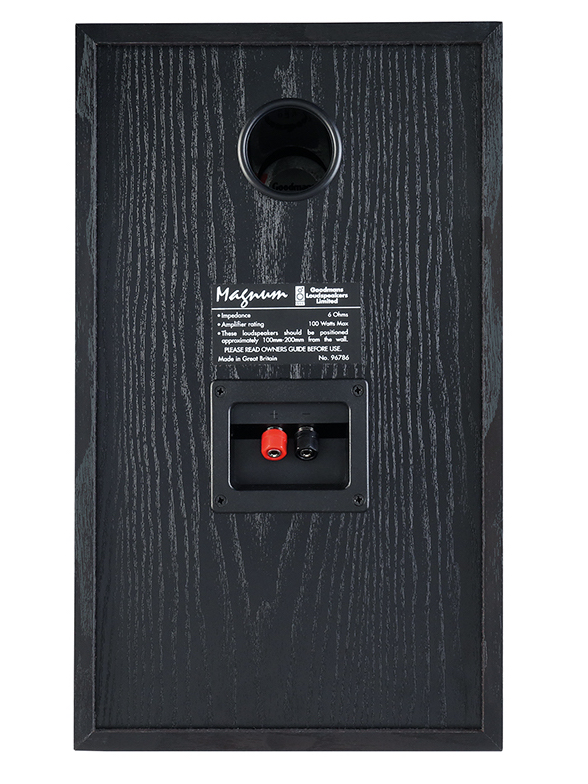
All is not lost though, as the Magnum’s enthusiastic cabinet can add an extra feeling of weight to the low bass just where it is needed. Subsequently, GLL’s speaker can’t half kick a dance tune out when you’re in the mood, as evidenced by a blast of Kylie Minogue’s ‘Lights Camera Action’ [Tension II; BMG 964059292], which thumped out into my room with the sort of heft and verve usually reserved for somewhat larger standmounts.
Buying secondhandIf you fancy a set of Magnums, then you may be in for a bit of a wait as GLL didn’t make many. Fortunately, if you do stumble across a pair, there is little to worry about other than the usual possibilities of general wear, tear and party abuse that any budget loudspeaker can suffer. The bass driver has a rubber surround, so there are no foam rot concerns, and the tweeter is both ferrofluid-cooled and robust. The cabinet’s vinyl wrap might have started to look a little tatty, but that’s about it.
The best news of all, though, is that they are affordable – as very few people have heard of them. The boxed and barely used pair featured here cost the princely sum of £50. And if your search yields no results, consider the smaller Mezzos at typically £30-£40. These give very little away to the Magnums, save a modicum of bass weight.
Hi-Fi News Verdict
The GLL Magnums are an illustration of the strengths and weaknesses of 1990s budget loudspeaker design. Despite their basic, lightweight cabinet construction, the minimalist driver design and integration still helps these black boxes turn in a lively and engaging sound. These rare loudspeakers provide an insight into the skills of an under-rated, sometimes exceptional and sadly missed hi-fi brand.
Sound Quality: 80%
